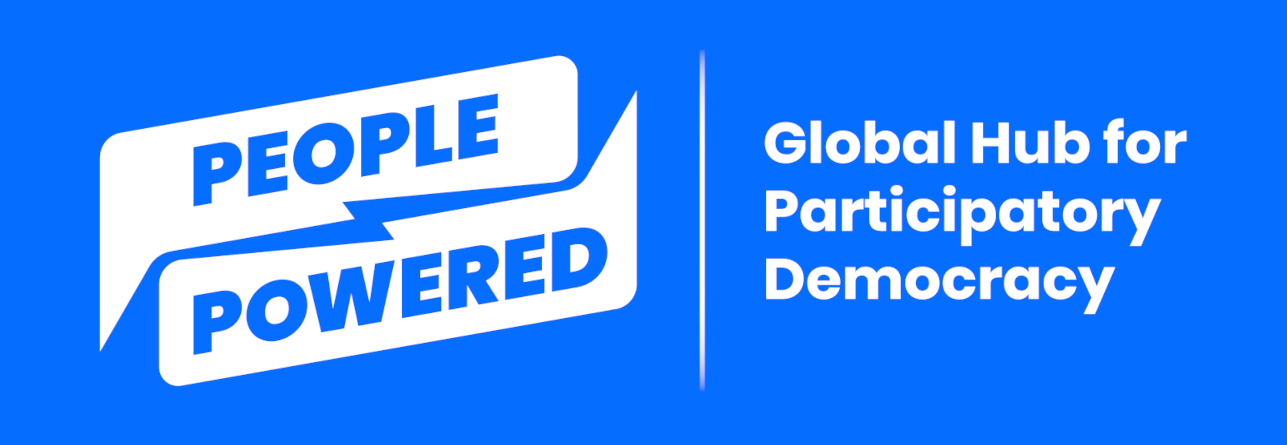A year of research: findings that address key PB challenges
/By Carolin Hagelskamp, 2021-2022 co-chair, Global PB Research Board
Carolin Hagelskamp
In 2019, People Powered created a Global Participatory Budgeting (PB) Research Board to coordinate global research on the field and its impacts. The board developed a Global PB Research Agenda, and we recently reported on progress to date.
The board also facilitates networking between individual researchers, who have been hard at work on their own PB studies and analyses, contributing a wealth of insights. Below, we summarize PB research that board members published over the last year, with links so you can explore the findings in detail.
For example, board members studied what motivates the implementation and continuation of PB and why it sometimes declines once established. I found it heartening to learn that the COVID-19 pandemic has not had a univocal impact; different communities reacted in different ways, with some expanding participation successfully with the help of digital tools. We also learned a lot more about how school PB fosters civic learning among youth. And wow! One study found that participatory practices contributed to greater tax compliance in Brazil. Let’s research whether that finding holds up in other places.
Read the findings below and discover your own “wows.”
Top left to right: Stephanie McNulty, Daniel Schugurensky, Pauliina Lehtonen, Jarosław Olejniczak
Bottom left to right: Brian Wampler, Jared Abbott, Jaroslav Dvorak, Michael Touchton
Impact of COVID
How resilient has PB been during the COVID-19 pandemic? Jaroslaw Olejniczak and Dorota Bednarska-Olejniczak set out to review that question in Poland. Among their findings were a reduction in the pool of funds available and the scope of citizen consultation, along with a shift to online voting. To protect PB during future times of crisis, local officials and residents must expand their proficiency in new technologies, such as remote voting, as well as develop a strong culture in support of PB.
Motivations for implementing participatory governance
Jared Abbott researched why large-scale participatory processes are implemented in some countries but only adopted on paper in others. In “When Participation Wins Votes: Explaining the Emergence of Large-Scale Participatory Democracy” (Comparative Politics), he concludes that nationwide implementation of binding participatory institutions is dependent on the backing of a strong institutional supporter, often a political party. In turn, parties will only implement these institutions if they place a lower value on the political costs than on the potential benefits of implementation. He looks in detail at two case studies from Venezuela and Ecuador.
In a feature for the Baltic Cities Bulletin (page 36), Jarsolav Dvorak observes that in Lithuania, PB gained momentum at the municipality level due to mayors representing ”left-to-center” political forces.
Factors that cause PB to decline
In “The Rise, Spread, and Decline of Brazil’s Participatory Budgeting: The Arc of a Democratic Innovation,” Brian Wampler and Benjamin Goldfrank examine participatory budgeting in Brazil. In the last decade of the 20th century, Brazil became a model of participatory democracy. However, some 30 years later, PB now is in steep decline, and on the verge of disappearing from Brazil. Wampler and Goldfrank examine what lessons we can learn from this arc. Will the same inverted trajectory plague other countries in the future, or will they be able to sustain PB for greater periods of time?
How to increase participation
Increasing citizen participation is a challenge everywhere. In Poland, Jarosław Olejniczak, Dorota Bednarska-Olejniczak and Viktorie Klímová find that it has been effective to link community grants to implementation of deliberative participation, co-creation and co-production initiatives. In this review, they analyze the design, operation, and scale of such grants when implemented by regional authorities in rural areas.
Impact of participatory governance on citizen tax compliance
Enforcement of tax collection can be costly and produce diminishing marginal returns if citizens are unwilling to pay their taxes. In “Of Governance and Revenue: Participatory Institutions and Tax Compliance in Brazil,” Michael Touchton, Brian Wampler and Tiago Piexoto conclude that when municipalities implement participatory governance (namely PB and participatory policy-making) they can collect significantly higher levels of taxes.
PB in schools
Daniel Schugurensky teamed with several other researchers in 2021 to publish a number of investigations of school-based PB in the United States:
“Reinventing Freire in the 21st century: Citizenship education, student voice and school participatory budgeting,” with Tara Bartlett. Last year was the 100th anniversary of the birth of Paulo Freire, one of the most influential educational thinkers of the 20th century. In this paper, published in Current Issues in Comparative Education, the authors focus on the connections between Freire’s ideas (especially those related to civic education and school democracy) and school-based PB, which has grown significantly in the last decade. (You also can read a modified version of this paper in Portuguese.)
“Democratization of educational systems through participatory approaches in the US schools and universities,” with Nadezhda Gavrilova. Published in The Education and Science Journal, this analysis combines secondary research with expert interviews to identify and describe participatory techniques that effectively integrate the teaching of theoretical knowledge of civil society with the development of practical skills. They show how school-based PB contributes to students’ knowledge of practical finance and civics, development of project management skills, and overall civic engagement.
“Does school participatory budgeting increase students’ political efficacy? Bandura’s ‘sources,’ civic pedagogy, and education for democracy,” with Norman Gibbs and Tara Bartlett. The authors examined the impact of school PB on students’ sense of political efficacy in one middle school in Arizona. Their student survey, published in Curriculum & Teaching, found a large effect, suggesting that the technique is an effective approach to civic pedagogy.
“School participatory budgeting: A toolkit for inclusive practice,” with Tara Bartlett, Madison Rock and Kristi Tate. This practical resource from Arizona University walks through five promising practices when implementing school PB, focusing on increasing inclusivity.
International comparisons
The Participatory Budgeting (PB) Blueprint Guidebook presents case studies from Germany, Poland, Portugal, Romania, France, Canada, China, Iceland, and Brazil. By highlighting their design principles and innovative ideas, the authors hope to inspire and guide local governments as they plan future PB initiatives. Compiled by Jaroslav Dvorak, Valentina Burkšienė, Gabriele Burbulytė-Tsiskarishvili, Peter Lorson and Ellen Haustein.
“Participatory Budgeting in Global Perspective,” from Brian Wampler, Stephanie McNulty and Michael Touchton, takes readers on a trip around the world. It offers a theory of change to account for how PB programs can produce social and political change, explains the main types of PB design and the different contexts in which they evolved, and compares implementation and outcomes across continents. One conclusion is that we still know too little about PB’s longer-term impacts across vastly different contexts and settings.
“Policy on the move: the enabling settings of participation in participatory budgeting,” by Pauliina Lehtonen, looks at how local contexts influence the practice of PB in the cities of Tampere and Łódź (Finland) and the Greater Manchester area in the United Kingdom. She describes, for example, how sociopolitical factors, implementers’ explicit objectives and the resources devoted to PB shape continuity over time, participants’ roles in the process, and the types and qualities of interactions that take place between different stakeholders.








